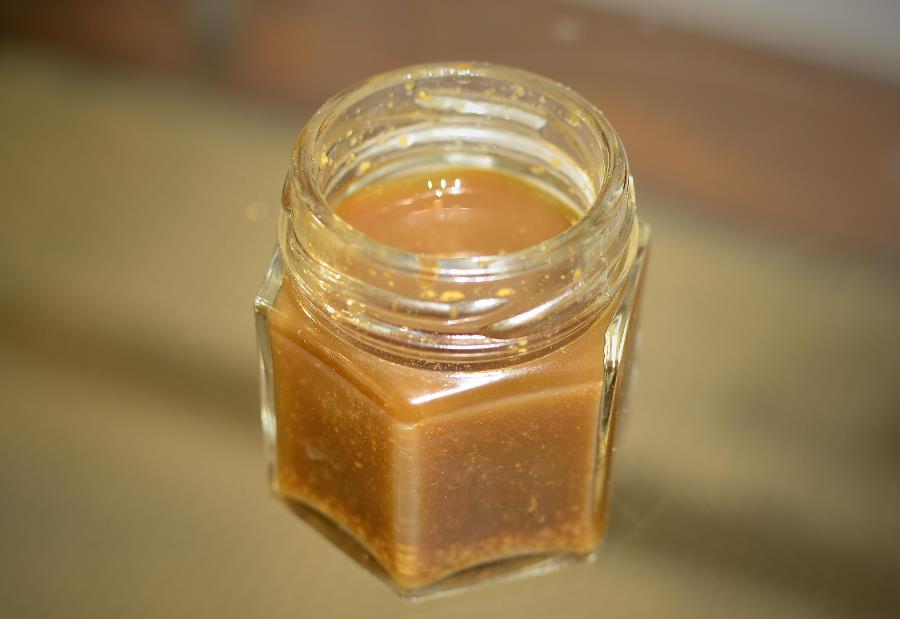
Homemade MSG-Free, Soy-Free, Vegan Oyster Sauce
In many Asian dishes, you’ll find oyster sauce is used to enhance the flavour of the dishes. But store-bought oyster sauce typically has MSG (or monosodium glutamate), which excites and increases the sensitivity of our taste buds so that we think the food we are eating is heartier, more robust and tastier than it really is. But MSG doesn’t just excite our taste buds. According to neurosurgeon, Dr. Russell Blaylock, it is an excitotoxin, as it overexcites our cells to the point of damage or death, causing brain damage to varying degrees. Many people have headaches, nausea, rapid heartbeat and other symptoms when they have been exposed to MSG. Even if you don’t exhibit short-term symptoms, long-term damage maybe being done. Blaylock believes that in the long term, MSG can lead to learning disabilities, Alzheimer’s disease, Parkinson’s disease, Lou Gehrig’s disease and more.
How does this happen exactly? MSG is made up of 78% free glutamic acid, 21% sodium, and 1% contaminants. Glutamic acid is used in various parts of our body, including our brain, heart, pancreas, and eyes, as neurotransmitters to initiate certain processes. MSG is thought to interfere with the proper functioning of the glutamate receptors, leading to neurological damage.
Unfortunately, MSG is not just found in Chinese food, it’s in many processed foods such as canned soups, frozen meals, dried soup mixes, bullion cubes, prepared gravy and salad dressings. It’s also found in many fast-food restaurants. Worse, you may not find MSG or monosodium glutamate labeled in the ingredient list. It can be disguised as “vegetable protein”, “natural flavouring”, “yeast extract”, “spices”, or other ingredients.
This brings me back to why I make my own oyster sauce. Being Chinese, I often make Chinese and other Asian dishes at home. It’s what I grew up with, and Asian dishes are typically quite healthy. So today, I am going to share my MSG-free, soy-free, vegan oyster sauce recipe first. For my traditional oyster sauce recipe, stay tuned for my next post!
Ingredients:
-
1.75 oz (50 g) dried shiitake mushrooms
-
1 tablespoon flax seeds
-
1-1/2 tablespoon vegetable oil (I prefer avocado oil)
- 1/2 tablespoon sesame oil (toasted preferably)
- 3 to 4 inches (7.5 to 10 cm) ginger, sliced thinly
- 1-2 cups water
- 2 tablespoons low sodium coconut aminos
- 1 teaspoon maple syrup or honey
- 1/2 tablespoon sea salt
Directions:
- Soak the mushrooms for at least 4 hours in a bowl in enough water to cover them by a full inch. After 4 hours, Drain the water and set it aside.
- Soak the flax seeds for at least four hours in a small bowl with 1/4 cup water. The flax seeds should absorb the water during this time.
- Slice the mushrooms into strips (the thickness of the strips doesn’t matter too much as we’ll be putting everything into a blender).
- Heat the vegetable oil in a medium saucepan or deep skillet over medium-high heat.
- Sauté the ginger, stirring occasionally, until the ginger turns golden-brown. Remove the ginger from the oil when ready, and set it aside temporarily.
- Add the mushrooms and sesame oil into the pan, reduce the heat to medium, and stir-fry for one or two minutes until the sesame oil becomes fragrant.
- Add the salt and coconut aminos. Stir-fry the contents of the pan for 30 to 60 seconds, blending the seasonings in thoroughly.
- Stir in the reserved water, additional water to get it up to 2 cups, and maple syrup. Then cover the pan and let it gently simmer for 10 minutes.
- Scoop out all of the ingredients into a bowl and let it cool down to room temperature.
- Pour the cooled mixture, flax seeds, and ginger into a blender, and pulse the ingredients together until texture becomes smooth.
- Return the pureed sauce into the pan, and cook it over low heat for 5 minutes to just heat the sauce through.
- Use the finished sauce immediately or pour it into glass container with an airtight lid and refrigerate it for up to one week.
